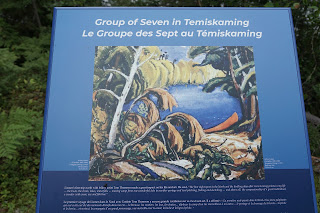In the dense, silent woods of Northern Ontario, where the trees grow tall and the winters are harsh, there once stood a bustling logging camp. This camp, now just a memory and a few remnants left to rust and weather in the elements, was home to the men who braved the wilderness to harvest the mighty pines and maples that the region was known for.
Among the tools and machines that were left behind, there is one that catches the eye—a large, weathered snow plow made of wood and iron, now resting quietly along a forest path. This snow plow, though long retired, tells a story of endurance, ingenuity, and the sheer will to survive in the unforgiving Canadian winters.
The men who lived and worked in the camp were hardy souls, accustomed to the cold, the isolation, and the backbreaking labor that came with logging. In those days, the snow would fall early and heavy, burying the camp under several feet of snow by the time winter truly set in. For the loggers, the work didn't stop when the snow started falling; in fact, it was just beginning. The logs had to be hauled out of the forest and transported to the mills, a task that was made even more challenging by the deep snow and freezing temperatures.
This snow plow was a lifeline, an essential piece of equipment that made it possible for the loggers to clear the rough, winding trails through the forest. Without it, the men would have been cut off, trapped in the camp until the spring thaw. The plow, with its broad wooden blade reinforced by iron, was hitched to a team of horses or oxen, the animals straining against the harness as they pushed through the snow. The work was slow, grueling, and dangerous, but it was necessary.
The plow itself was a marvel of simple engineering. Handcrafted by the camp's blacksmith and carpenters, it was built to withstand the harsh conditions. The wooden frame, though worn and splintered now, was once sturdy and strong, able to push aside the heaviest drifts. The iron reinforcements, now rusted and pitted, were hammered into place by hand, each rivet driven home with a precision born of necessity.
As the years passed and the logging industry changed, the camp was eventually abandoned. The men moved on, the trees grew back, and the snow plow was left behind, a relic of a bygone era. Now, it sits quietly among the ferns and moss, a reminder of the days when men and their machines battled the elements in a never-ending struggle to survive and thrive in the wilderness.
Visitors to the forest often pass by the old plow, perhaps wondering about its purpose, its history. But for those who know, it is a symbol of the resilience and determination of the loggers who once called this place home. The snow plow is more than just a piece of old machinery; it is a testament to the human spirit and the enduring connection between man and nature.










